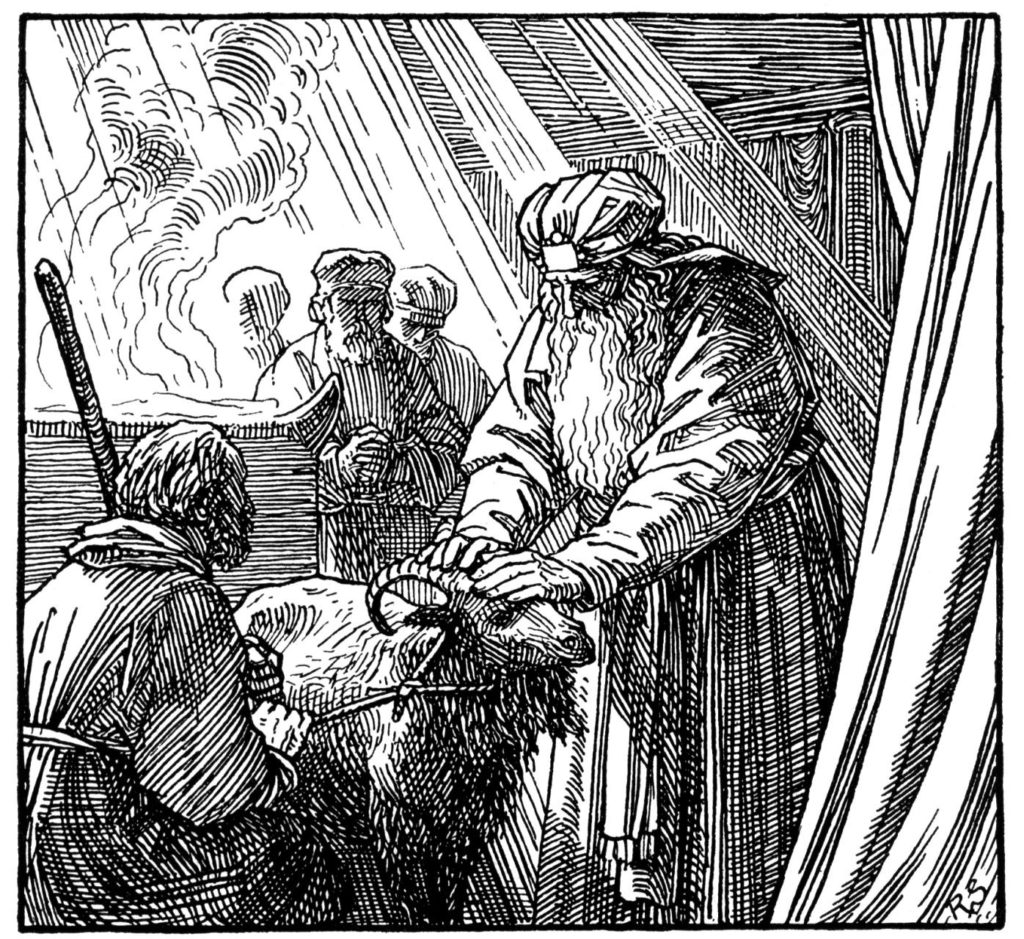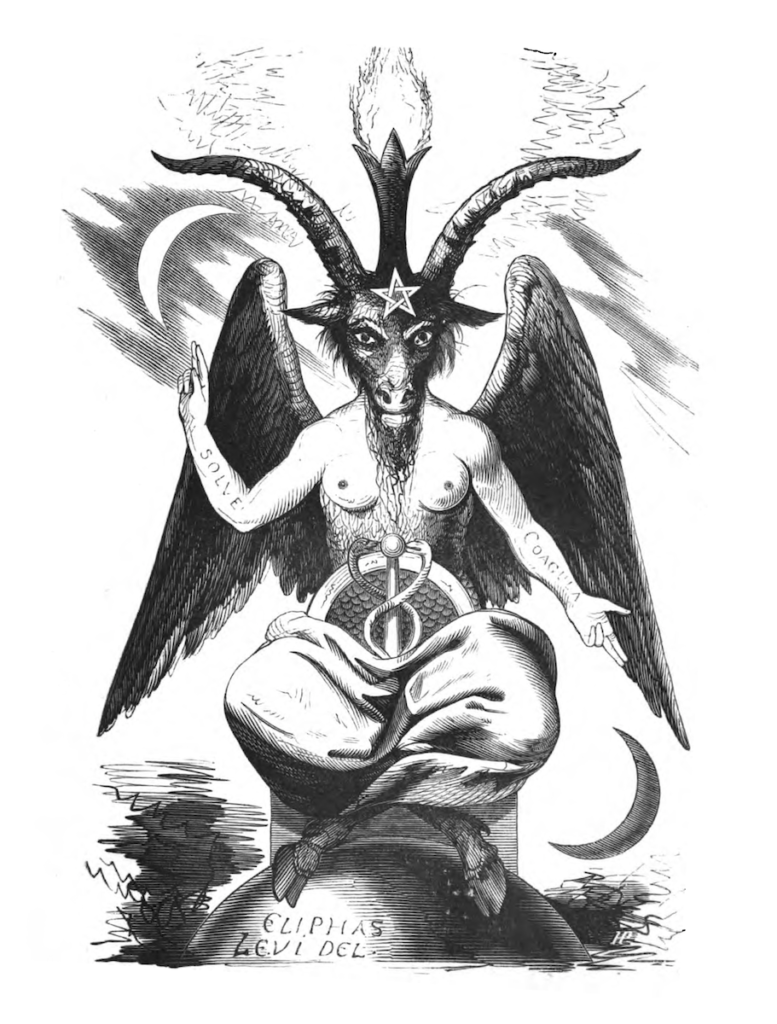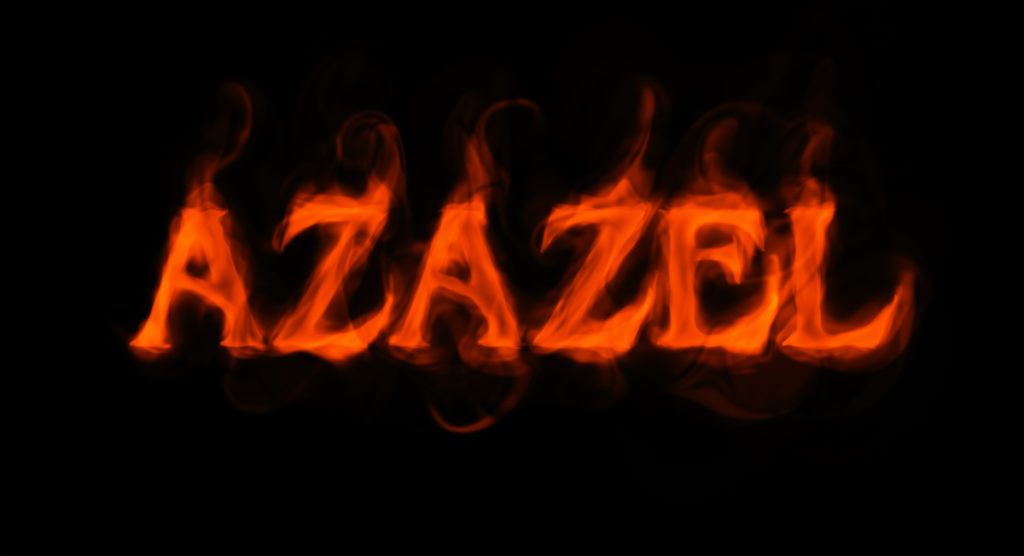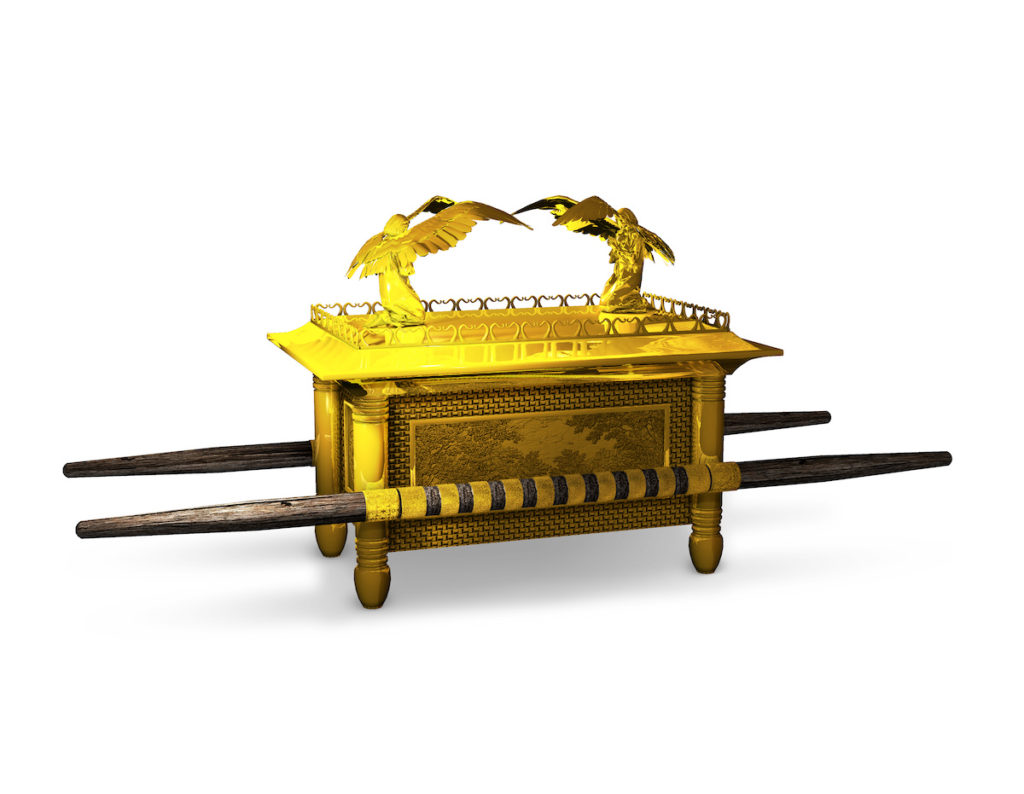
Leviticus 16:1–34, Passover and the Day of Atonement compared. A cursory reading of the Scriptures seems to indicate that there exists overlapping similarities between some of the blood atonement ceremonies of Passover or Pesach and the Day of Atonement or Yom Kippur. What are the differences between the sin atonement offerings of Pesach and Yom Kippur?
Perhaps realizing the fact that the Passover occurs during the spring feast day season and the Day of Atonement occurs during the fall feast day season may help to answer this question. This is because prophetically the spring feast days picture Messiah Yeshua’s first coming, while the fall feast days prophetically point to his second coming. How does this understanding shed light on the answer to this question?
Both Pesach and Yom Kippur picture redemption through the shed blood of Yeshua, that is, the saint being delivered from bondage to sin and the rudiments of this world. Passover symbolizes the first steps a new believer takes when coming out of spiritual Egypt and accepting Yeshua, the Lamb of YHVH, as one’s Savior and Master. Yom Kippur, on the other hand, pictures the blood of the Lamb covering over the saint’ sins after his initial salvation experience and the corporate sins of the nation of Israel.
If our understanding of the order of end time events is correct, Yom Kippur also prophetically points to the time when Yeshua will return to the earth to initiate the final regathering of the lost and scattered tribes of Israel, and to prepare to marry his bride, redeemed Israel or the Israel of Elohim (Gal 6:16), that is, the saints. Perhaps this latter understanding will help to answer why another Passover-like feast is needed. Yom Kippur does not focus so much on leaving Egypt, but rather on YHVH’s people preparing to enter the millennial kingdom under the Messiah. Those saints who will be the betrothed bride of Yeshua need to make themselves ready for Yeshua’s return by putting on spiritual robes of righteousness that are spotless and pure. Although the bride of Messiah saints are not sinners by definition, for the Bible calls them “the righteous” (1 Pet 4:18), they still sin (hopefully only occasionally; 1 John 1:8–9; Rom 7:13–25), and still need to have their sins washed away by the blood of Yeshua, even just before they meet Yeshua at his return. Yom Kippur pictures this final redemptive cleansing or preparation time of Yeshua’s bride.
Understanding the Yom Kippur Goat Rituals

Understanding and interpreting the rituals of Leviticus 16 can be perplexing and complicated task. This is because often encrypted in certain scriptural passages the deep and open-minded Bible student will find multiple levels of meaning and prophetic fulfillments. The serious biblical researcher understands this and is not put off by any seeming discrepancies between a surface or literal fulfillment of a scripture vis-à-vis its prophetic fulfillment. An example of this would be the virgin and child prophecy of Isaiah 7. There was both a historical or immediate fulfillment of this prophecy and a future one relating to the coming Messiah.
Moreover, we must keep something else in mind when dealing with biblical passages that are difficult to understand because they contain figurative language of a prophetic nature that often employ typologies (types and shadows). By definition, a type is a person or thing that represents someone or something else. When dealing with prophetic types in Scripture, the type never perfectly mirrors that to which it is prophetically pointing. The type is merely a shadow of what is to come (Col 2:17; Heb 10:1; 8:5), and therefore it is neither a perfect representation of the reality nor its there a perfect one-to-one correlation between the two. However, there are enough similarities to deduce a correlation between the two, even as a shadow is the shape and outline of the image it represents, but it doesn’t contain all the details of it.
Having laid these things out, it is the opinion of many biblical scholars including Alfred Edersheim that the Yom Kippur ceremonies of Leviticus 16 were completely fulfilled by Yeshua at his first coming. Alfred Edersheim, the Jewish 19th century rabbinic Jewish scholar turned Christian scholar and educator, lays this out quite nicely in his book “The Temple and Its Ministry” in his chapter on Yom Kippur.
There can be no doubt, as Edersheim asserts, and I agree, that Yeshua perfectly fulfilled the Yom Kippur rituals at his first coming with regard to his atoning for man’s sin. The writer of the Epistle to the Hebrews, more importantly, is clear on this as well. There is no more redemptive work that he needs to done. Yeshua was the perfect sacrifice once and for all. Period. As such, at Yeshua’s second coming, he will not need to perform any further redemptive work. So, for example, the high priest coming out of the sanctuary on Yom Kippur in Lev 16 before dealing with the azazel goat can have no bearing on redemption whatsoever, or else the writer of Hebrews lies when he says that Yeshua’s work of atoning for sin was complete.
However, when Yeshua comes back, he will come as the righteous Judge. Indeed the Testimony of Yeshua (New Testament) tells us that Yeshua judged Satan at the cross, but additionally, when Yeshua returns, he will enforce that judgment. Satan will be cast into the abyss and eventually into the lake of fire along with his rebellious comrades both spirit and mortal beings.
Furthermore, there is something else to consider with regard to the scapegoat ritual that may have prophetic implications relating to the second coming of Yeshua. It just so happens that there are a number of ancient Jewish apocryphal writings including 1 Enoch that tell us that the name of the angel that led the pre-flood rebellion of angelic beings, who then defiled humanity and introduced all kinds of evil into the world as per Genesis 6:2–4 necessitating Elohim to destroy that world and its evil inhabitants in the flood was Azazel. Some scholars, such as Dr. Michael S. Heiser and others affirm that the reason that the scapegoat’s name in Lev 16 was Azazel was that Yeshua came not only to redeem man from the sin at the fall in Eden, but from the sin introduced by Azazel and his evil cohorts in the pre-flood world. It’s an intriguing idea that had a lot of currency in second temple Jewish literature and even among the apostolic writers. Heiser documents this pretty well from biblical and extra-biblical sources in his book entitled Reversing Hermon, which I highly recommend. So, to put a finer point on this issue, when Yeshua returns, he will pronounce judgment not only on Satan but on Azazel et al as well as on their nephilim offspring, who so villainously corrupted the world with all sorts of evil under which humanity has been suffering ever since. Therefore, Yom Kippur eschatologically, in part, is about final judgment of this age that Yeshua will impose on Satan and his spirit and human minions.
It is also interesting to note that the second temple Jews had the non-biblical tradition of leading the azazel goat out of the temple, through the eastern gate, across the bridge over the Kidron Valley, over the Mount of Olives and into the Judean wilderness on the other side to the east, where the goat was then pushed over a cliff and fell to its death. The Jews may have had some prophetic inkling here. When Yeshua returns, we read in the book of Revelation that he will cast Satan into the bottomless pit. In a sense, Azazel represents Satan, thought not primarily, since Leviticus 16 says that the azazel goat made atonement for the Israelites’ sins—something only Yeshua did, NOT Satan. However, Satan brought sin into the world, and Yeshua took that sin on himself to pay the death penalty for our sins, and he became sin of which the serpent in the wilderness (a picture of Satan, the nachash or seprent) was a prophetic picture and to which Yeshua, somewhat surprisingly, likened himself in John 3:14 in his discourse with Nicodemus.
Now let’s add another interesting tidbit about the azazel goat ritual of Leviticus 16. Originally, the Torah commands that the goat be released into the wilderness, presumably to wander until it starved to death. However, a thousand or more years latter, by the time of the second temple era, the Jews, instead of simply releasing the goat as the Torah prescribes, they pushed it over a cliff where it plunged to its death. What’s going on here? Why the change? In partial answer to this question, Edersheim (ibid.) speculates, and I think correctly so, that the azazel goat was released into the wilderness to teach the Israelites that the sacrificial system of the old or former covenant was insufficient to once and for all deal with the sin issue—something that the writer of the Epistle to the Hebrews makes abundantly clear. In Lev 16 we read that the high priest would confess the sins of the people over the azazel goat before it was led out to the wilderness and released. This illustrated the fact that the sacrificial system under the old covenant didn’t really blot sin out, and only put it aside temporarily until Yeshua the perfect sacrifice, to which all the animal sacrifices pointed, came. However, as already noted, the Jews eventually evolved this ritual, so that the goat was pushed over a cliff. This seems to speak of not only Yeshua’s death on the cross, but also of Satan—the chief perpetrator of sin—being judged at Messiah’s second coming by being bound and cast into the bottomless pit (Rev 20:1–3).
You see, there are many parts and pieces to this puzzle. I hope this brief discussion has expanded your understanding a bit and helped to illustrate that there is not necessarily a one-size-fits all explanation to many of these biblical ceremonies. Elohim may actually be teaching many truths all at the same time. This speaks to the awesome wonder and inimitable intellect of the YHVH Elohim. Soli Deo gloria!
Leviticus 16:4, He shall put. Before Aaron could minister in the tabernacle and in the Presence of Elohim he had to take off his everyday clothes and put on his special, sanctified priestly garments. There is a prophetic and spiritual lesson here for us. Before we can be fit for YHVH’s spiritual service, we must put off the old (carnal) man and put on the new, redeemed, sanctified spiritual man. (See Eph 4:22–24; Col 3:9–10.) Linen garments is prophetic symbolism for walking in righteousness or robes of righteousness, which are the righteous deeds of the saints (Rev 19:8).
Wash his body in water. Whenever this is found, it is prophetic code language meaning “to walk in holiness.
Leviticus 16:7, The significance of the two goats. Why were there two goats? Do both goats represent Yeshua and the atoning work he accomplished on the cross, or will accomplish yet in the future? If so, how does each goat represent a different facet of this work? Some see in the meaning of the name azazel some satanic implications leading them to believe that this goat represents the adversary himself and his ultimate exile from mankind. This belief derives from Jewish folklore, but has no scriptural support. Verse ten tells us that the purpose of the scapegoat is “to make atonement.” Is this something Satan did? On the other hand, when we read John 3:14, we see that Yeshua, while on the cross bearing the sins of the world, in a sense, became like the serpent—a picture of the devil who was the first sinner and the one who led man into sin. Yeshua become man’s sin offering (see Isa 53:6,10). When this occurred, what did Yeshua accomplish in the spiritual realm for our benefit? (See Gen 3:15; Col 2:15; 1 Cor 15:54–56.)
Leviticus 16:8, The scapegoat and Genesis 6:4. The Hebrew word for scapegoat is azazel. Curiously, Azazel was the name of the lead demon who, according to apocryphal (non-biblical) book of 1 Enoch, was the leader of the 200 angels Elohim (or sons of Elohim) assigned to watch over man in the pre-flood world who did not keep their proper domain (see Jude 6), but instead had sexual relations with the daughters of men (Gen 6:2) producing the evil nephilim giants of the pre- and post-flood world (Gen 6:4).

The book of First Enoch along with other second temple apocryphal Jewish writings including the Dead Sea Scrolls hold the view that these fallen angels corrupted humans by introducing to them all types of evil including forbidden sciences and knowledge, the art of war, sexual perversion, sorcery and witchcraft, potions and illicit herbal concoctions, jewelry and cosmetics for women.
Although the serpent introduced sin and rebellion against Elohim at the tree of knowledge in the Garden of Eden, it was the predominant view of second temple Judaism that most of the evil in the world traces its roots back to the incursion of the angelic sons of Elohim into human affairs. As such, it was believed by the second temple era Jews that the primary role of the coming Messiah would be to redeem man from the sin and curses that these fallen angels and their offspring brought upon the human race, and only secondarily was it the Messiah’s role to redeem man from the curse of eating of the forbidden fruit. It was also expected that the Messiah would bring judgment upon those fallen angels who are now being held in the abyss or tartarus (see 2 Pet 2:4; 1 Pet 3:19).
If this understanding is correct, perhaps this explains more precisely the role of the two goats in Leviticus chapter 16. The goat that was sacrificed addressed man’s original sin when he partook of the tree of knowledge, and the azazel goat addressed the sin of man brought into the world by the fallen angels. These two goats prophetically represent Yeshua redeeming man from both the rebellion of Satan leading man to commeti the original sin in the garden as well as the Satan-inspired angel Azazel causing man to fall into greater or more extensive and heinous sin and rebellion in the pre-flood world.
The Scapegoat Explained

The Soncino Pentateuch says of the azazel goat of Leviticus 16:10 that the word scapegoat,as used in the KJV, is a poor translation and should be rendered as dismissal. In the Septuagint it is translated as the one to be sent away which agrees with the term used in the Mishnah. Azazel is not a proper name, but a rare Hebrew noun (kZtZG from ZG/aze meaning “goat” and kZt meaning “to go away”) meaning “dismissal or entire removal.” It is the technical term for the entire removal of sin and guilt of the community, that was symbolized by the sending away of the goat into the wilderness.
There is some difference of opinion as to the symbolic meaning of the azazel goat. Some say it is a picture of Satan who initially tempted man to sin or to rebel against Elohim, and has been doing so ever since. Since he is the source of sin and since he is responsible for man sinning, he must consequently bear the responsibility for his actions which he will do when he is bound and thrown into the bottomless pit at the beginning of the millennium. The azazel goat being dismissed into the wilderness is a picture of this. On the other hand, there are those who teach that the azazel goat is a picture of Yeshua who bore our sins upon himself and died alone in our place. Which view is correct? Well, both. Sort of…
The most important key to determining who this goat represents is found in Leviticus 16:10,
But the goat, on which the lot fell for azazel, shall be set alive before YHVH, to make atonement over him, to send him away for azazel into the wilderness. (emphasis added)
Note the highlighted portion. Who made atonement for our sins? Satan or Yeshua? Scripture does not reveal the devil as the redeemer of mankind. Of Yeshua being our atonement the Scripture say:
And not only so, but we also joy in Elohim through our Master Yeshua the Messiah, by whom we have now received the atonement. (Rom 5:11)
Who being the brightness of his glory, and the express image of his person, and upholding all things by the word of his power, when he had by himself purged our sins, sat down on the right hand of the Majesty on high. (Heb 1:3)
Who needeth not daily, as those high priests, to offer up sacrifice, first for his own sins, and then for the people’s: for this he did once, when he offered up himself. (Heb 7:27)
For then must he often have suffered since the foundation of the world: but now once in the end of the world hath he appeared to put away sin by the sacrifice of himself. (Heb 9:26)
Furthermore, the act of laying on of hands (Lev 16:21) onto the azazel goat symbolizes the transference of sins from the guilty party (the children of Israel) to the innocent azazel goat. The innocent becomes the sin-bearer. Of course, who can deny that this is a perfect picture of Yeshua, and not Satan!
Spiritually, the azazel goat represents the entire removal of sin’s defilement from the camp of Israel into the wilderness. In Psalms 103:12 Elohim removes our sins from us as far as the east is from the west. YHVH does this, not Satan!
In Leviticus 16:22 we read, “And the goat shall bear upon him all their iniquities unto a land not inhabited: and he shall let go the goat in the wilderness.”Throughout the Scriptures there are numerous references to Yeshua bearing our sins.
All we like sheep have gone astray; we have turned every one to his own way; and YHVH hath laid on him the iniquity of us all. (Isa 53:6)
Therefore will I divide him a portion with the great, and he shall divide the spoil with the strong; because he hath poured out his soul unto death: and he was numbered with the transgressors; and he bare the sin of many, and made intercession for the transgressors. (Isa. 53:12)
So Messiah was once offered to bear the sins of many; and unto them that look for him shall he appear the second time without sin unto salvation. (Heb 9:28)
Who his own self bare our sins in his own body on the tree, that we, being dead to sins, should live unto righteousness: by whose stripes ye were healed. (1 Pet 2:24)
I believe that the azazel goat has a secondary meaning as well. Though it doesn’t outrightly represent Satan, but Yeshua, we will see that our Savior, while hanging on the cross represented sin in its totality and in its extreme, and so for a brief moment took on the image of the serpent himself. Yeshua said of himself in John 3:14: “And as Moses lifted up the serpent in the wilderness, even so must the Son of man be lifted up.”In Scripture, the serpent is a picture of the Satan, the adversary (Gen 3:1, 2, 4, 13, 14, 15; Rev 12:9; 20:2).
In Leviticus 16:8 we see that as the two goats stood before the high priest, one on his right hand and one on his left, the lots would be cast and one would become the azazel goat and one would be the goat that would be sacrificed in the tabernacle sanctuary itself. An interesting note that may have a bearing here: Hebraically, the right hand is the hand of strength, power and judgment, while the left land is the hand of mercy and grace.
Both Adam Clarke and Matthew Henry in their commentaries say that both goats refer to a different aspect of Yeshua’s atonement. Henry says, “Thus [Yeshua] was prefigured by the two goats, which both made one offering: the slain goat was a type of [Messiah] dying for our sins, the scapegoat a type of [Messiah] rising again for our justification…[after which] the entrance into heaven which [Messiah] made for us is here typified by the high priest’s entrance into the most holy place (Heb 9:7)” (Matthew Henry’s Commentary On the Whole Bible, vol. 1, p. 509). Henry doesn’t explain just how the goat going into the wilderness typifies Yeshua’s redeeming us, but I should like to offer an alternative idea in this regard. Perhaps the azazel goat represented Yeshua’s soul descending into sheol or the grave and there taking the keys of death (1 Pet 3:18–20; Rev 1:18).

Leviticus 16:14, Mercy seat eastward. What is the significance of YHVH’s command to specifically sprinkle the blood of the sacrificed animal on the east side of the mercy seat? Simply this. If one has ever had the privilege of standing on the Temple Mount in Jerusalem, it all makes sense. The east side of the mercy seat faces directly toward the Mount of Olives, where the altar of the red heifer was located. It was likely near this exact spot that Yeshua was crucified just outside of the Jerusalem city gates (Heb 13:12), and where he sprinkled his blood as an atonement for men’s sins (Heb 11:24). At this same spot, one had a full frontal view of the temple, which is why those attending Yeshua’s crucifixion were able to see the rent veil in the temple from the spot where he was crucified (Matt 27:51 cp. 54). Therefore, the high priest sprinkling the blood of the bull and goat sin offering on the east side of the mercy seat on Yom Kippur was a prophetic act pointing to what would take place some fifteen hundred years later on the Mount of Olives. Yeshua’s shedding of his blood there as an atonement for men’s sins was a fulfillment of the high priest sprinkling blood on the mercy seat on Yom Kippur. When Yeshua was crucified, although his cross faced the mercy seat in the temple, the holy of holies no longer contained that item. To this day, no one knows what became of it.
The sprinkling of blood on the east side of the mercy seat is a small detail that’s easily overlooked in the Scriptures, but it has profound spiritual and prophetic significance. This detail meshes with other seemingly insignificant details found elsewhere in the Scriptures. When these puzzle pieces are placed together, they form another picture of Messiah’s work. This is another proof that only the hand of YHVH Elohim could have inspired the writing of the Bible. May your faith in the divine origination of the Scriptures be strengthened to the glory of Elohim!


The two goats of Yom Kippur are representing Yeshua and Bar-Abba.
Azazel is the prince of Satyrs (the goat demons).
Jewish myth says that the Archangel Michael will bury Azazel under a large rock in the desert.
Shalom, John